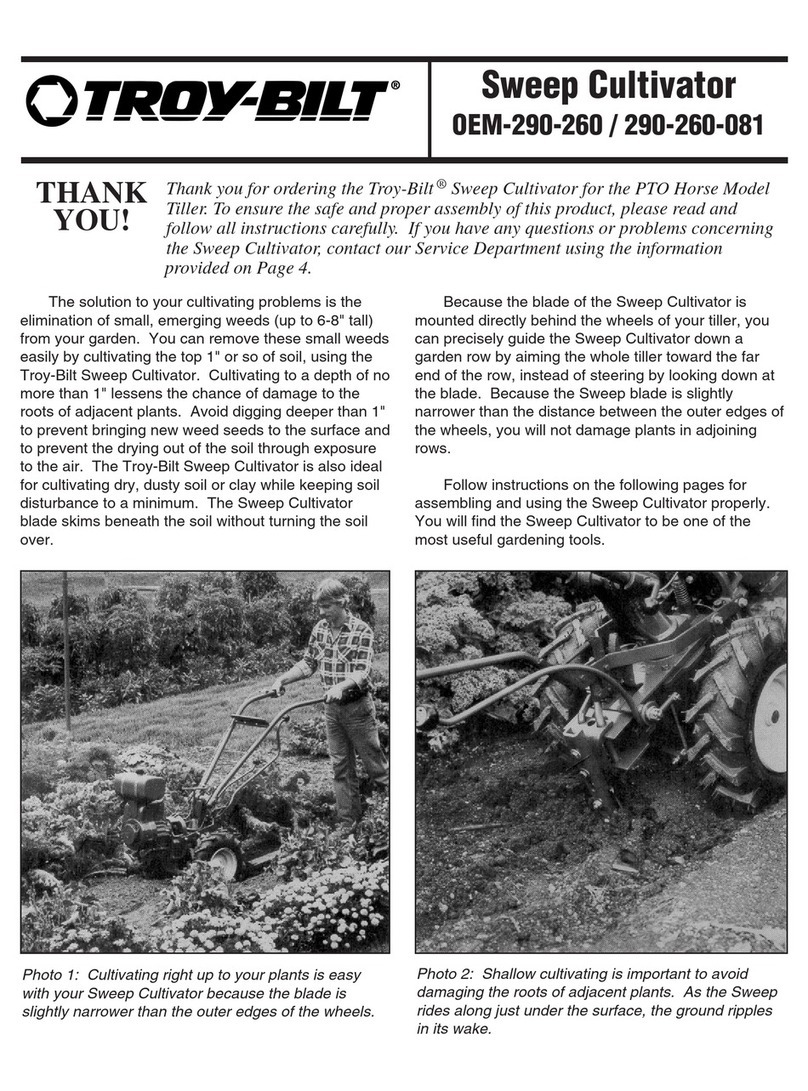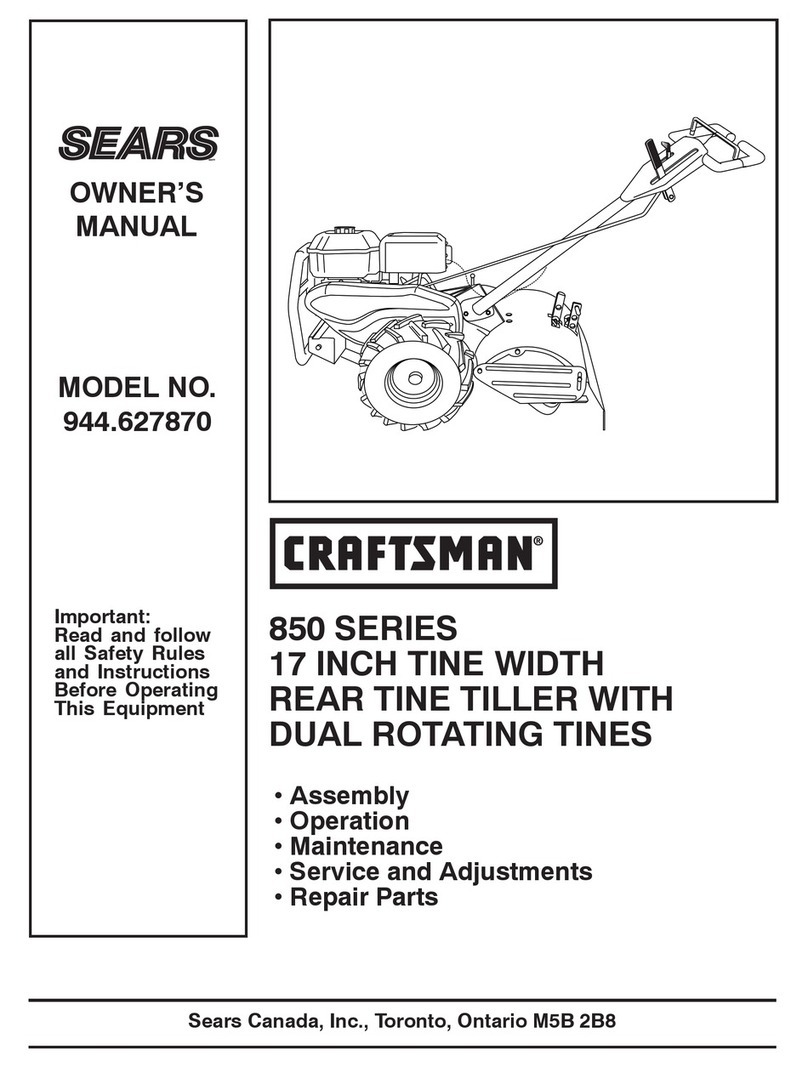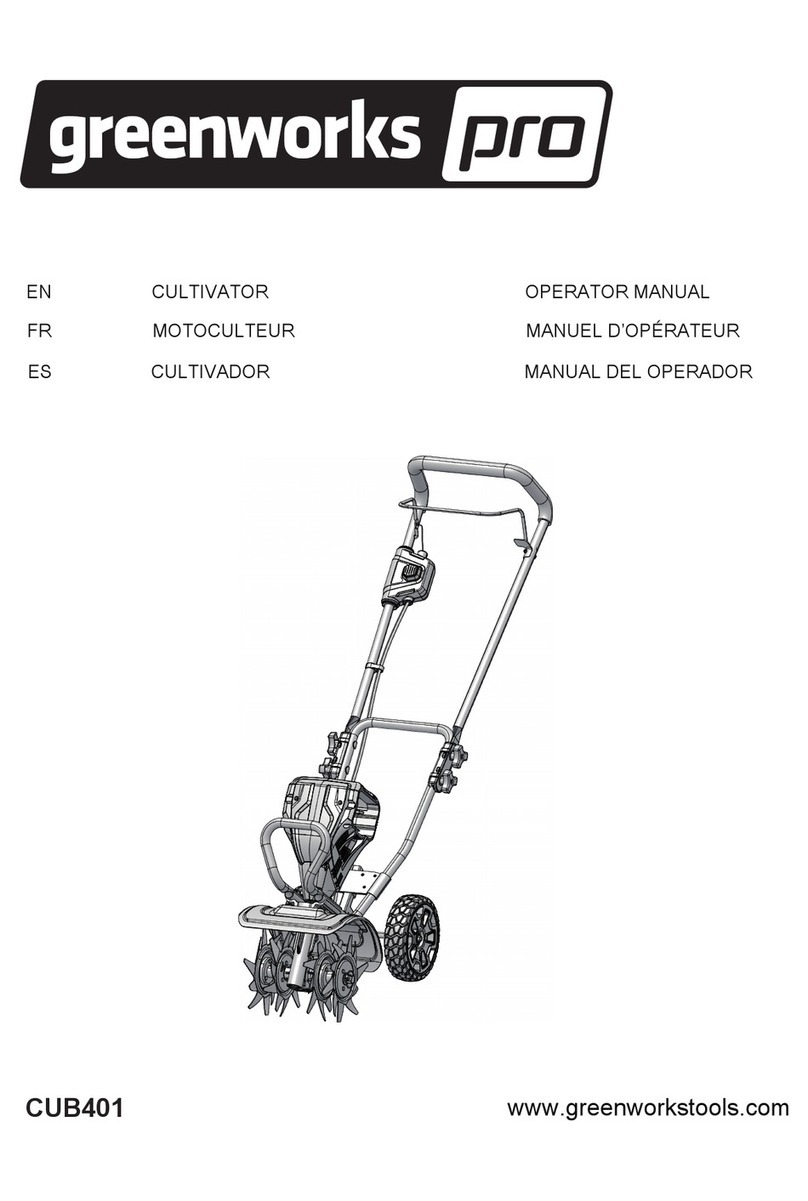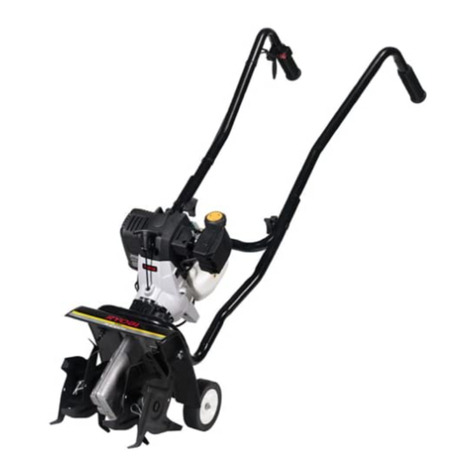
tightness to be sure the machine is in safe working
condition.
• Keep the machine free of grass, leaves or grease to reduce
the chance of a fire hazard.
• Do not use the machine if switch does not turn it on or
off. Any tool that cannot be controlled with the switch is
dangerous and must be repaired.
• Disconnect the battery pack from the machine before
making any adjustments, changing accessories, or storing
machine. Such preventive safety measures reduce the risk
of starting the machine accidentally.
• Before cleaning, repairing, or inspecting, remove the
battery and make certain all moving parts have stopped.
• Never spray water directly into the motor compartment of
the machine.
• Use only identical replacement parts when servicing the
machine. Use of unauthorized parts may create a risk of
serious injury to the user, or damage to the product.
2.2 SPECIFIC SAFETY RULES
• Cleaning, user-maintenance (such as lubrication
adjustment, and the like), operations recommended by the
manufacturer, and a warning to the user that any other
servicing should be performed by an authorized service
representative.
• Do not use near underground electric cables, telephone,
lines, pipes, or hoses. If in doubt, contact your utility or
telephone company to locate underground services.
• If the machine strikes a foreign object, stop the motor,
remove the battery pack, thoroughly inspect the machine
for any damage, and repair the damage before restarting
and operating the machine.
• Maintain Machine With Care – Keep cutting edge sharp
and clean for best performance and to reduce the risk of
injury.
• Do not overload the machine capacity by cultivating too
deep in a single pass or at too fast a rate.
• Stay alert. Watch what you are doing. Use common sense.
Do not operate the machine when you are tired, ill, or
upset.
• Don’t use in rain.
• Be aware that the machine may unexpectedly bounce
upward or jump forward if the tines should strike buried
obstacles such as large stones, roots, or stumps.
• Wear hearing protection.
• Ensure that people and pets are at least 50’ (15 m) away
from the machine while in use.
• Ensure that work area is free of slippery spots or
excessive quantities of stone.
• Start the machine carefully according to instructions from
a normal operating position and with feet well away from
the tines. It will do the job better and with less likelihood
of a risk of injury at the rate for which it was designed.
• Keep hands away from blades.
• Remove the battery pack from the machine before
unclogging the tines and when making any repairs,
adjustments, or inspections.
• Never operate the machine on a slope.
• Use extreme caution when pulling the machine towards
you.
• When not in use, the machine should be stored indoors in
dry, and high or locked-up place – out of reach of
children.
• When battery pack is not in use, keep it away from other
metal objects, like paper clips, coins, keys, nails, screws
or other small metal objects, that can make a connection
from one terminal to another. Shorting the battery
terminals together may cause burns or a fire.
• Keep Children Away — All visitors and bystanders
should be kept at a distance of at least 50 feet from work
area.
• Do not use a battery pack or machine that is damaged or
modified. Damaged or modified batteries may exhibit
unpredictable behavior resulting in fire, explosion or risk
of injury.
• Don’t grasp the exposed cutting blades or cutting edges
when picking up or holding the machine.
• Do not expose a battery pack or machine to fire or
excessive temperature. Exposure to fire or temperature
above 130°C may cause explosion. The temperature of
130°C can be replaced by the temperature of 265°F.
• Follow all charging instructions and do not charge the
battery pack or machine outside of the temperature range
specific in the instructions. Charging improperly or at
temperatures outside of the specific range may damage
the battery and increase the risk of fire.
• Have servicing performed by a qualified repair person
using only identical replacement parts. This will ensure
that the safety of the product is maintained.
• Do not modify or attempt to repair the machine or the
battery pack (as applicable) except as indicated in the
instructions for use and care.
• Check damaged parts. Before further use of this
cultivator, a guard or other part that is damaged should be
carefully checked to determine that it will operate
properly and perform its intended function. Check for
alignment of moving parts, binding of moving parts,
breakage of parts, mounting, and any other condition that
may affect its operation. A guard or other part that is
damaged should be properly repaired or replaced by an
authorized service center unless otherwise indicated
elsewhere in this manual.
• Save these instructions. Refer to them frequently and use
them to instruct others who may use this cultivator. If you
loan someone this unit, loan them these instructions also.
• For use only with LB604/LB6041 or other BAC series
batteries.
• For use only with CAC801 or other CAC series charger.
• Do not dispose of batteries in fire, the cells may explode,
check with local codes for possible special disposal
instructions.
5
English EN






























